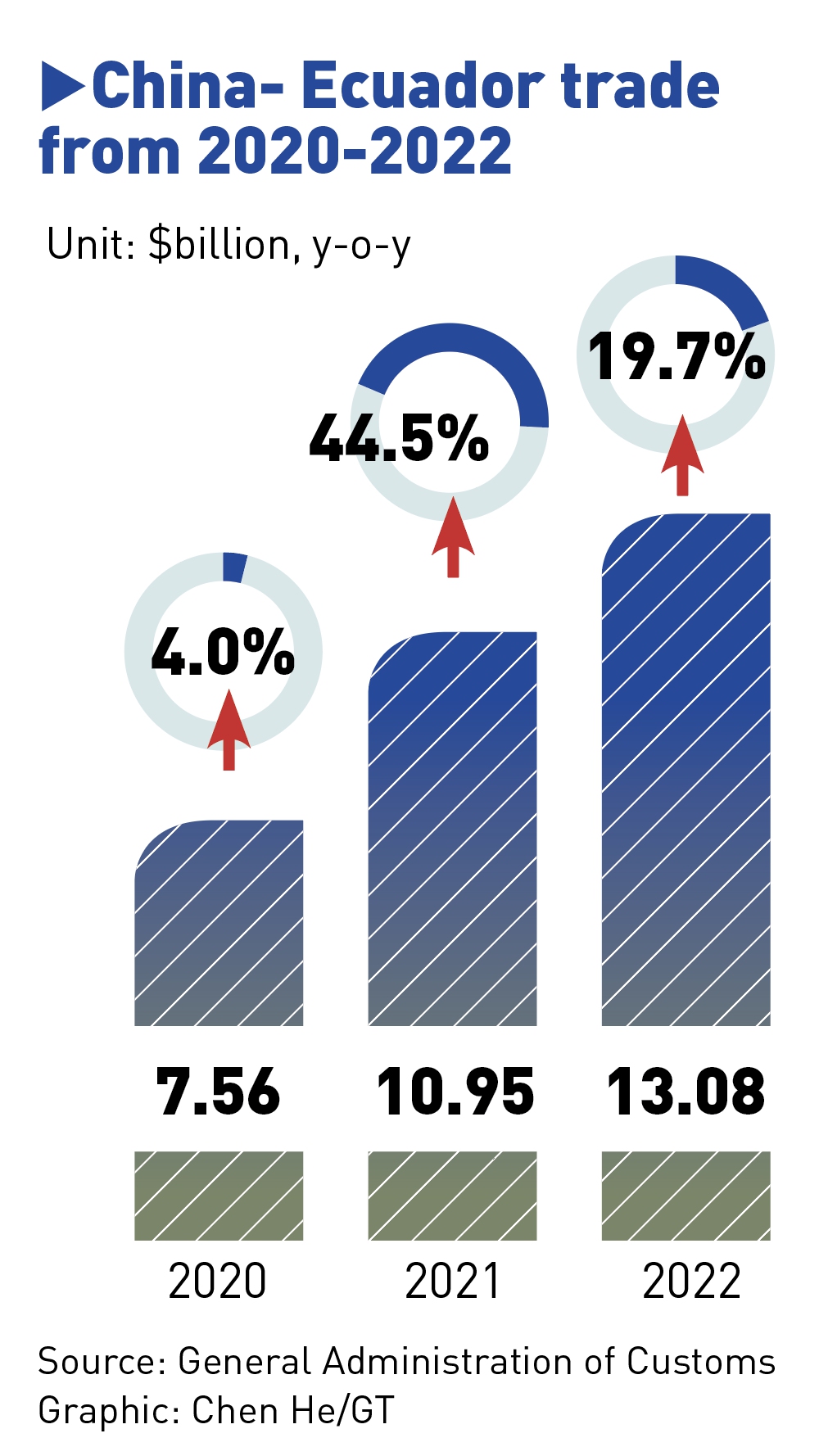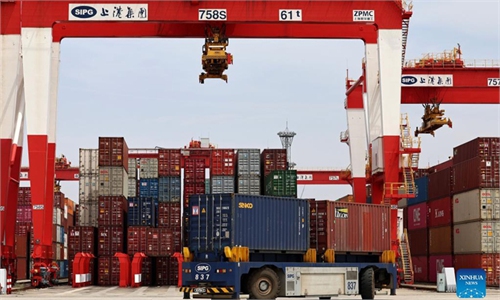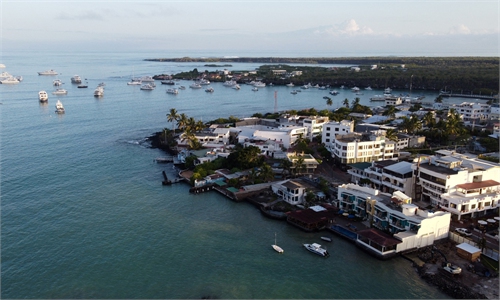China-Ecuador FTA, a strong impetus to upgrade the quality of bilateral trade: Chinese Ambassador to Ecuador
WSJ 'falling apart' smear report not full picture of BRI project: ambassador to Ecuador

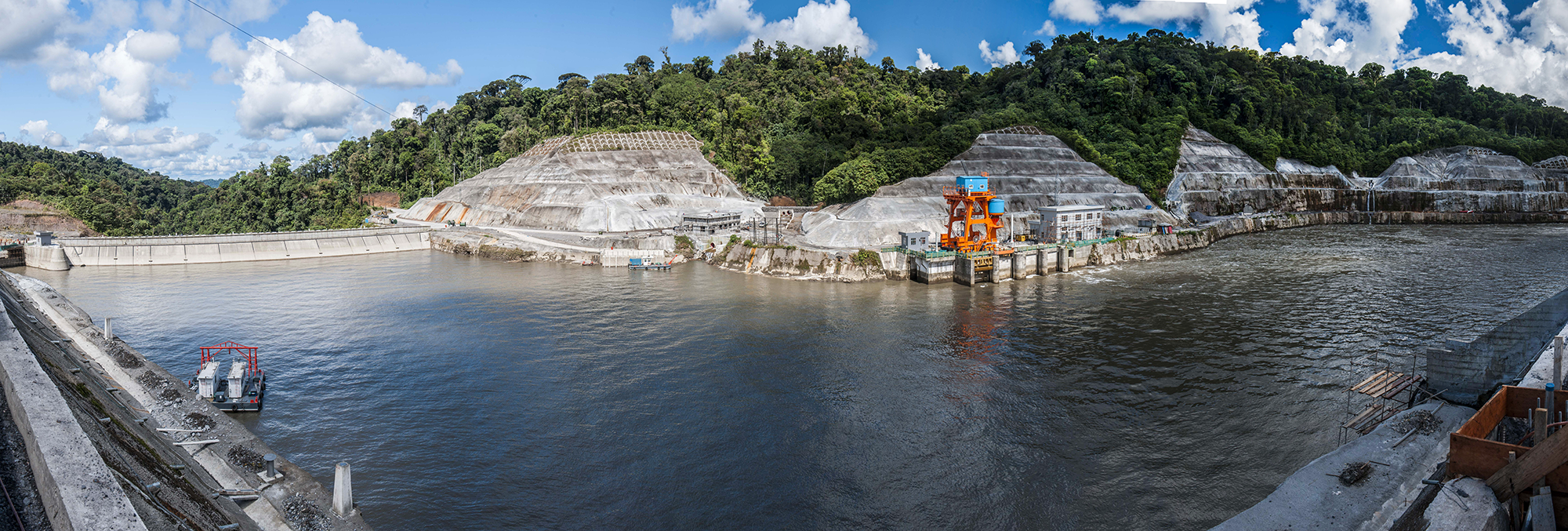
Coca Codo Sinclair Hydroelectric Plant. Photo: Courtesy of PowerChina
Editor's Note:
In February 2022, China and Ecuador issued a joint statement announcing the launch of free trade agreement (FTA) negotiations. After more than 10 months, the two countries concluded the bilateral FTA negotiations at the technical level. The Global Times (GT) reporter Liu Yang recently conducted an exclusive interview with Chen Guoyou (Chen), Chinese Ambassador to Ecuador, in which the ambassador shared his views on the China-Ecuador FTA and future cooperation, refuting foreign media outlet's smear against a local project under the Belt and Road Initiative (BRI).
GT: The Wall Street Journal reported that the Coca Codo Sinclair Hydroelectric Plant, Ecuador's largest hydropower plant built by China, could break down due to "thousands of cracks." Are the reports about cracks in the hydropower plant true?
Chen: Coca Codo Sinclair Hydropower Station is the largest hydropower plant ever constructed in Ecuador as well as a landmark project in China-Ecuador bilateral cooperation. The project has an installed capacity of 1.5 million kilowatts with an EPC contract value of $1.98 billion, and was undertaken by the China Hydropower Group and mostly financed by the Export-Import Bank of China.
To date, the cumulative power generation of the power plant has exceeded 40 billion kilowatt-hours, accounting for more than 30 percent of national power generation in Ecuador. It not only effectively eases electricity demand, optimizes the electricity structure of the country, and brings light to thousands of households across the country, but also helps the country transform from a power importing country to a power exporting country, and gain foreign exchange earnings.
Regarding the partial cracks on the inner surface of the water distribution ring pipe of the hydropower project, the problem has been assessed by an international third-party independent testing agency TUV SUD, which concluded that it will not affect the operation and safety of the unit and that the plant is safe for its 50-year design lifespan.
It should be noted that the report did not include interviews with all the parties involved, and the statements are not the full picture of what happened. In addition, the report pieced some issues that are not directly related together, such as the construction of the power plant, the preliminary design, and the problem of river erosion, giving people the illusion that it is the fault of the Chinese enterprises.
GT: How do you evaluate the benefits of the BRI for China and Ecuador?
Chen: Ecuador is an important economic and trade partner of China in Latin America. Over the years, China and Ecuador have carried out cooperation following the principles of equality, mutual benefit, and a win-win situation, and achieved fruitful results.
In recent years, driven by bilateral relations and Chinese investment and financing, Chinese enterprises have actively participated in the development of local infrastructure such as electricity, transportation, petroleum, and mining, and strategic areas such as oil and mining, as well as the construction of hospitals, housing, schools, and other infrastructure projects.
The two countries have numerous landmark cooperation projects, mainly including the power station project cluster represented by the Coca Codo Sinclair Hydropower Station, The Ecuadorian 500kV Power Transmission and Transformation Project, the ECU911 Integrated Security Service, the infrastructure project cluster for post-earthquake reconstruction in 2016, the Mirador Copper Mining Project, and the oil block development project, and etc.
As the promoters of pragmatic cooperation between the two countries and the practitioners of building a community with a shared future between China and Ecuador, the majority of Chinese enterprises in Ecuador have actively integrated into the local community, fulfilled their social responsibilities, and insisted on localized employment, creating thousands of jobs annually, bringing significant economic and social benefits to the country, and strongly contributing to the economic recovery and improvement of people's livelihoods.
At the end of 2018, the Chinese and Ecuadorian governments signed a Memorandum of Understanding on the joint construction of the BRI, which has further deepened the pragmatic cooperation between the two sides in various fields. Looking to the future, we look forward to further deepening cooperation in traditional areas such as trade, investment and financing, as well as infrastructure, continuously expanding exchanges and cooperation in emerging areas such as 5G and new energy.
We will develop new cooperation under the framework of high-quality construction of the BRI and overall cooperation between China and Latin America to achieve a higher level
of mutual benefit and a win-win situation for both countries. The cooperation will open up broader prospects for economic and trade development between the two countries.
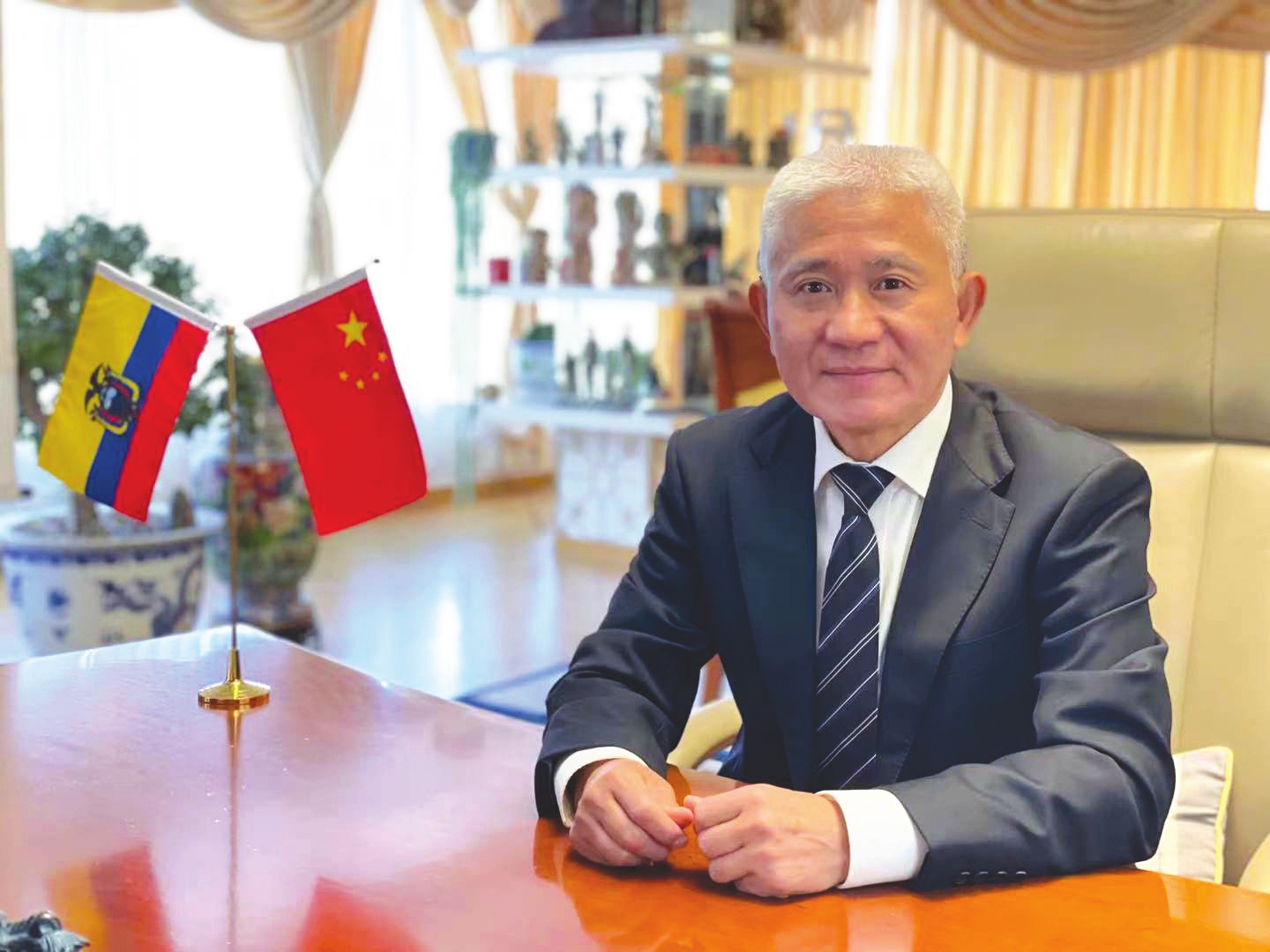
Chen Guoyou, Chinese Ambassador to Ecuador Photo: Courtesy of Chinese Embassy in Ecuador
GT: What will be the obvious changes in foreign trade between China and Ecuador after the China-Ecuador FTA comes into effect? In what aspects will the two sides strengthen their cooperation?
Chen: In February 2022, President Xi Jinping held a meeting with Ecuadorian President Guillermo Lasso, who was visiting China. After the meeting, the two countries issued a joint statement announcing the launch of FTA negotiations.
With joint efforts, after more than 10 months of intensive consultations, China and Ecuador recently concluded the bilateral FTA negotiations at the technical level. At present, the two sides are stepping up the completion of their respective domestic procedures to announce the conclusion of the negotiations as soon as possible.
It is believed that the signing of the FTA will definitely inject a strong impetus to upgrade the quality of bilateral trade, and is also conducive to promoting the two countries' market access, industrial interchange, and integration of interests, which will effectively benefit the two countries and the two peoples.
GT: How do you see the future of China-Ecuador development?
Chen: China and Ecuador are comprehensive strategic partners. Over the past 43 years since the establishment of diplomatic relations between the two countries, mutual political trust has been deepened with the increasing expansion of pragmatic cooperation and humanistic exchanges.
It is especially worth mentioning that economic and trade cooperation has become the most active and fruitful area in the comprehensive strategic partnership between the two countries. In recent years, the China-Ecuador economic and trade cooperation, which is based on complementary advantages and mutual benefits, has withstood the test of international changes and the COVID-19 pandemic, fully demonstrating its resilience and vitality.
At present, China has become the second largest trading partner and the largest non-oil product trading partner of Ecuador. Ecuador is the 8th largest trading partner of China in Latin America, with bilateral trade continuously progressing in a balanced and sustainable direction.
According to Chinese statistics, in 2022, bilateral trade between China and Ecuador reached $13.08 billion, up 19.7 percent year-on-year, of which Ecuador's exports to China amounted to $6.8 billion, up 24.6 percent year-on-year. The two countries have also been cooperating on major projects driven by Chinese investment and financing.
Since President Lasso took office in May 2021, he has attached great importance to the development of relations with China, and the two sides have maintained close communication and reached many important agreements on deepening practical cooperation in trade, investment, and other fields.
Bilateral economic and trade cooperation between China and Ecuador has ushered in new development opportunities, and we are confident about the prospects of bilateral cooperation.
